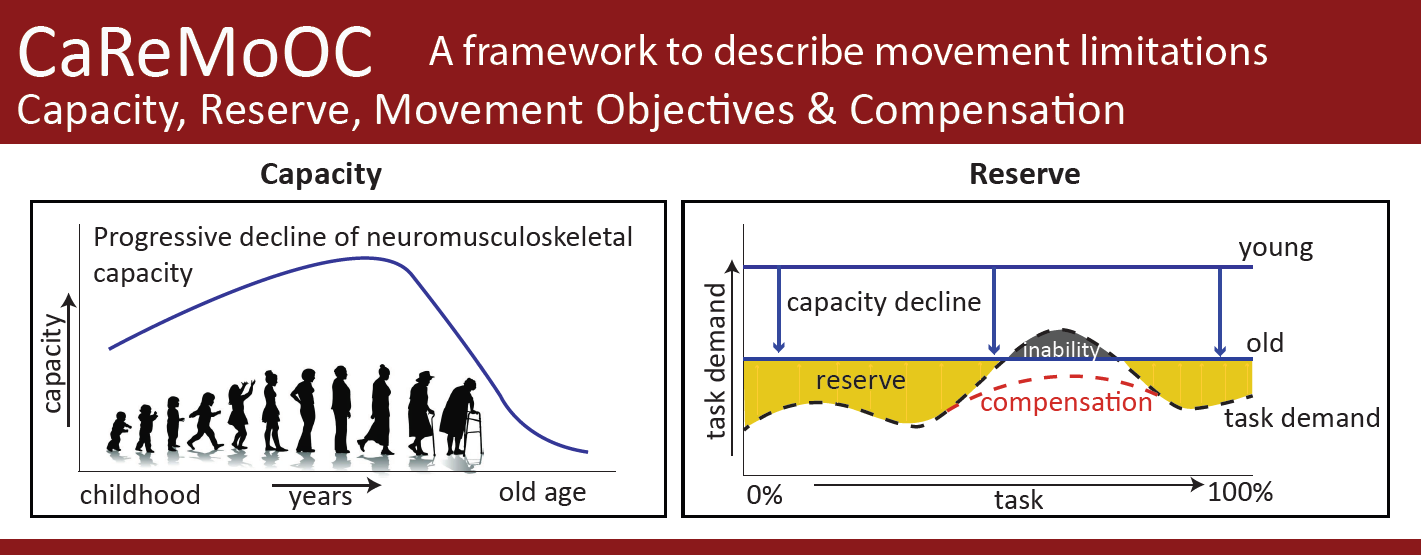The prevention, mitigation and treatment of movement impairments, ideally, requires early diagnosis or identification. As the human movement system has physiological and functional redundancy, movement limitations do not promptly arise at the onset of physical decline. A such, prediction of movement limitations is complex: it is unclear how much decline can be tolerated before movement limitations start and how humans select compensatory movement strategies for a task. Adding to the challenge is the lack of general applicable and consensus terminology on movement limitations. Currently, the term ‘homeostatic reserve’ or ‘physiological reserve’ is used to refer to the redundancy of the human biological system, but this does not describe the redundancy in the muscle architecture of the human body. This article therefore proposes CaReMoOC, a framework incorporating neuromusculoskeletal capacity (accumulation of neuromusculoskeletal resources over the lifespan), reserve (task-specific difference between capacity and task demand), movement objectives (considerations made to plan a movement), and compensation (use of NMSK resources to respond to the task demand). Two forms of compensation are Compensation for Capacity, when capacity does not meet the task demands, and Compensation for Movement Objectives, when the movement is changed due to for example a fear of falling. This article demonstrates the framework for healthy ageing, providing an overview of age-related capacity decline (neural, skeletal, muscular system) and shifted weighting of movement objectives (energy, pain, stability, speed) relevant for experimental and modelling research in biomechanics and motor control. CaReMoOC provides a means to communicate hypotheses and theories on movement impairments and limitations. To predict movement limitations, we need to find ways to quantify NMSK reserve.

